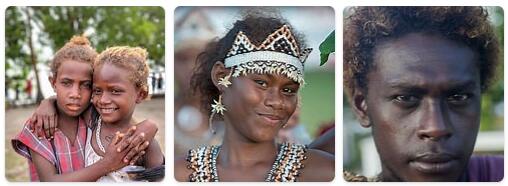
Yearbook 2004
Solomon Islands. The total population in Solomon Islands is 686,895 people in 2020. The situation in the war-torn Solomon Islands was relatively calm after the Australian-led peacekeeping force arrived in 2003 to restore law and order, following the mutual fighting between local militia groups. However, a member of the peace force was shot dead, and Australia decided to send more troops. Over 3,700 weapons had been collected in a year, those responsible for the previous chaos had been seized and new personnel had been recruited to the previously collapsed local police force.
The country’s economy also began to show signs of recovery. The operation of the Peace Force was the largest military operation in the South Pacific since World War II. In addition to Australia, New Zealand, Fiji, Tonga and Papua New Guinea participated in the peace mission.

Economy
| Inflation rate | 0.50% |
| Unemployment rate | |
| Gross domestic product (GDP) | 1,330,000,000 USD |
| GDP growth rate | 3.50% |
| GDP per capita | $ 2,200 |
| GDP by sector | |
| Agriculture | 34.30% |
| Industry | 7.60% |
| Service | 58.10% |
| State budget | |
| Revenue | 49.7 million |
| Expenditure | 75.1 million |
| Proportion of the population below the national poverty line | – |
| Distribution of household income | |
| Top 10% | k. A. |
| Lower 10% | k. A. |
| Industrial production growth rate | 3.20% |
| Investment volume | |
| National debt | 9.40% of GDP |
| Foreign exchange reserves | |
| Tourism | 2014 |
| Number of visitors | 20,000 |
| Revenue | $ 64,100,000 |
SOLOMON ISLANDS – Honiara
Honiara
Honiara, since 1952 the capital of the Solomon Islands, southwest Pacific; 66,200 residents (2012). Honiara is a port city with exports of coconuts, timber and fish. About 15 km east of Honiara is Henderson International Airport. The city was built after the Second World War around the US military headquarters.